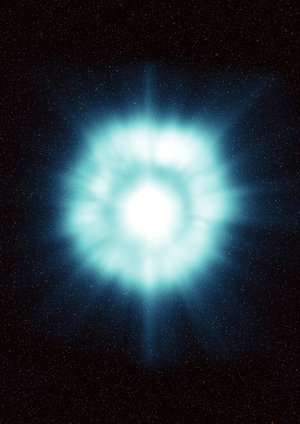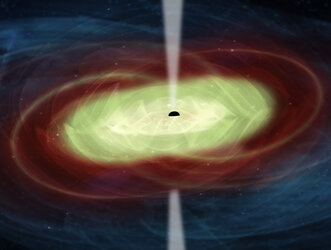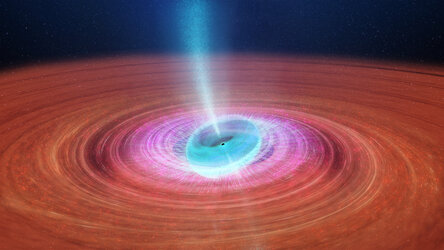Accept all cookies Accept only essential cookies See our Cookie Notice

About ESA
The European Space Agency (ESA) is Europe’s gateway to space. Its mission is to shape the development of Europe’s space capability and ensure that investment in space continues to deliver benefits to the citizens of Europe and the world.
Highlights
ESA - United space in Europe
This is ESA ESA facts Member States & Cooperating States Funding Director General Top management For Member State Delegations European vision European Space Policy ESA & EU Space Councils Responsibility & Sustainability Annual Report Calendar of meetings Corporate newsEstablishments & sites
ESA Headquarters ESA ESTEC ESA ESOC ESA ESRIN ESA EAC ESA ESAC Europe's Spaceport ESA ESEC ESA ECSAT Brussels Office Washington OfficeWorking with ESA
Business with ESA ESA Commercialisation Gateway Law at ESA Careers Cyber resilience at ESA IT at ESA Newsroom Partnerships Merchandising Licence Education Open Space Innovation Platform Integrity and Reporting Administrative Tribunal Health and SafetyMore about ESA
History ESA Historical Archives Exhibitions Publications Art & Culture ESA Merchandise Kids Diversity ESA Brand Centre ESA ChampionsLatest
Space in Member States
Find out more about space activities in our 23 Member States, and understand how ESA works together with their national agencies, institutions and organisations.
Science & Exploration
Exploring our Solar System and unlocking the secrets of the Universe
Go to topicAstronauts
Missions
Juice Euclid Webb Solar Orbiter BepiColombo Gaia ExoMars Cheops Exoplanet missions More missionsActivities
International Space Station Orion service module Gateway Concordia Caves & Pangaea BenefitsLatest
Space Safety
Protecting life and infrastructure on Earth and in orbit
Go to topicAsteroids
Asteroids and Planetary Defence Asteroid danger explained Flyeye telescope: asteroid detection Hera mission: asteroid deflection Near-Earth Object Coordination CentreSpace junk
About space debris Space debris by the numbers Space Environment Report In space refuelling, refurbishing and removingSafety from space
Clean Space ecodesign Zero Debris Technologies Space for Earth Supporting Sustainable DevelopmentLatest
Applications
Using space to benefit citizens and meet future challenges on Earth
Go to topicObserving the Earth
Observing the Earth Future EO Copernicus Meteorology Space for our climate Satellite missionsCommercialisation
ESA Commercialisation Gateway Open Space Innovation Platform Business Incubation ESA Space SolutionsLatest
Enabling & Support
Making space accessible and developing the technologies for the future
Go to topicBuilding missions
Space Engineering and Technology Test centre Laboratories Concurrent Design Facility Preparing for the future Shaping the Future Discovery and Preparation Advanced Concepts TeamSpace transportation
Space Transportation Ariane Vega Space Rider Future space transportation Boost! Europe's Spaceport Launches from Europe's Spaceport from 2012Latest
The explosive birth of black holes
Thank you for liking
You have already liked this page, you can only like it once!
This animated artistic impression illustrates the immense release of energy during a gamma-ray burst (GRB). The hugely energetic explosions of GRBs take place in distant galaxies and are among the most powerful and luminous events observed since the Big Bang.
The energy is released in the initial phase of a supernova explosion of a star, in an extremely short time with respect to the eons of a star’s lifetime. Typical GRB events last from a few milliseconds to a few hours and the outflow is dominated by the most energetic type of light, gamma rays – hence the name. In that short moment, the energy released by the burst outshines by several times the total amount of energy emitted by all the stars in a the galaxy (over that period).
Most of the GRBs (70%) last longer than two seconds and are classified as long gamma-ray bursts. Astronomers think these catastrophic releases of energy are associated with the births of new black holes. The black holes are formed within the heart of the largest stars – stars more than 20 times more massive than the Sun – in the last moments of their life.
Throughout its life as shining source of light, a star maintains its shape by the processes of nuclear fusion taking place in its interior. Nuclear fusion of lighter elements (typically hydrogen) into heavier ones (for example helium) is driven by the enormous inward gravitational pressure within the star. In a game of push-and-pull, the energy released by nuclear reactions generates enough outward pressure to balance out the contracting force of gravity. When the nuclear fuel in a star’s core eventually dries up, there is no longer enough outward pressure to counteract the crushing force of gravity and a very massive star rapidly collapses to form a black hole.
This process is extremely violent and sudden. As shown in the clip, the black hole drives powerful jets of particles traveling near the speed of light. The jets pierce through the outer layers of the disintegrating star, emitting X-rays and gamma rays as they stream into space.
-
CREDIT
NASA/Swift/Cruz deWilde -
LICENCE
ESA Standard Licence
-
Closed captions available Captions and subtitles are available (automatically generated by YouTube) - select your language using the YouTube player controls. A non-YouTube version is available using the 'download' button above.
-
Documentary
-
-

Extreme explosion

Supermassive black holes after merging

Tilted black hole accretion disc

A 'spitting' black hole















 Germany
Germany
 Austria
Austria
 Belgium
Belgium
 Denmark
Denmark
 Spain
Spain
 Estonia
Estonia
 Finland
Finland
 France
France
 Greece
Greece
 Hungary
Hungary
 Ireland
Ireland
 Italy
Italy
 Luxembourg
Luxembourg
 Norway
Norway
 The Netherlands
The Netherlands
 Poland
Poland
 Portugal
Portugal
 Czechia
Czechia
 Romania
Romania
 United Kingdom
United Kingdom
 Slovenia
Slovenia
 Sweden
Sweden
 Switzerland
Switzerland

























